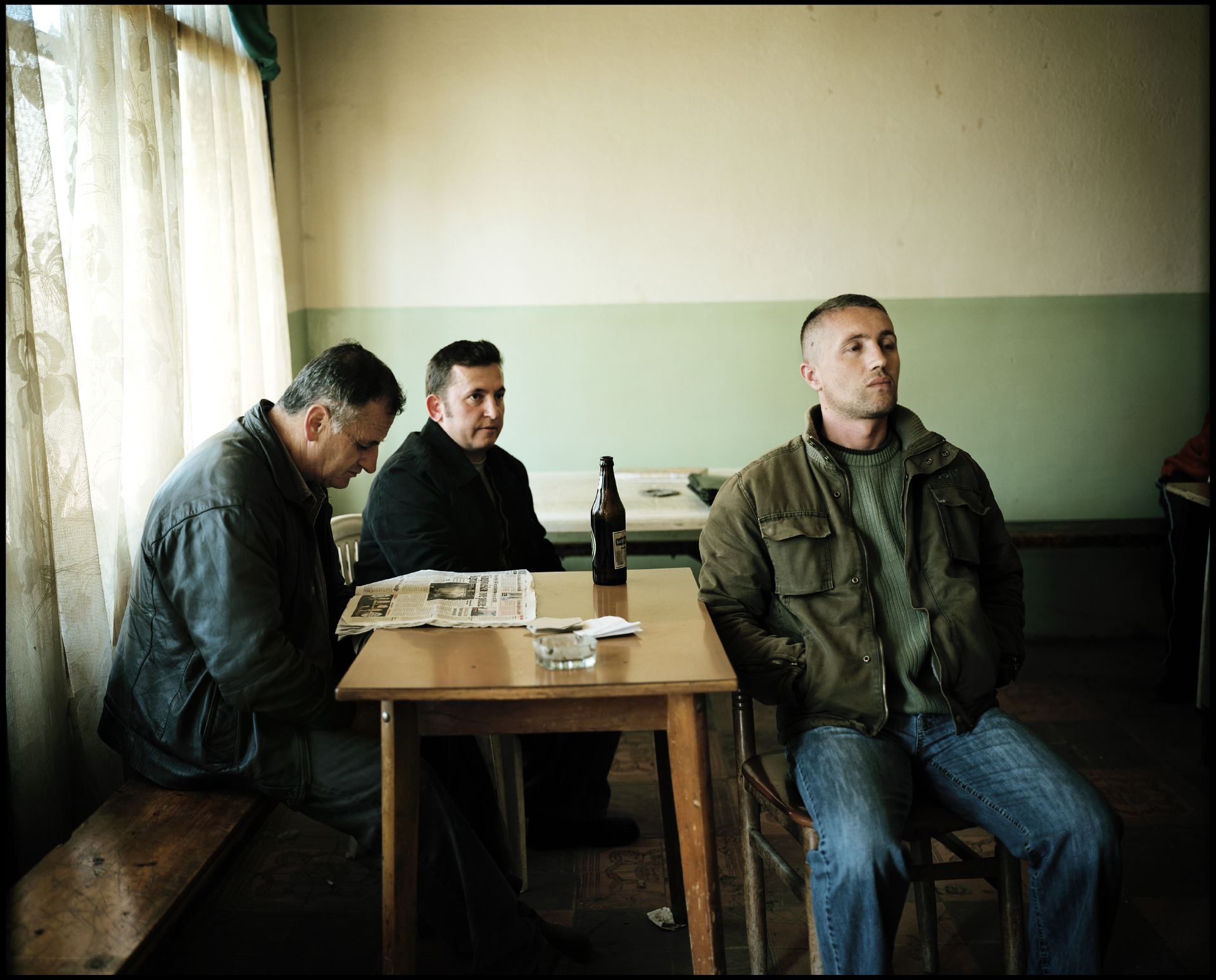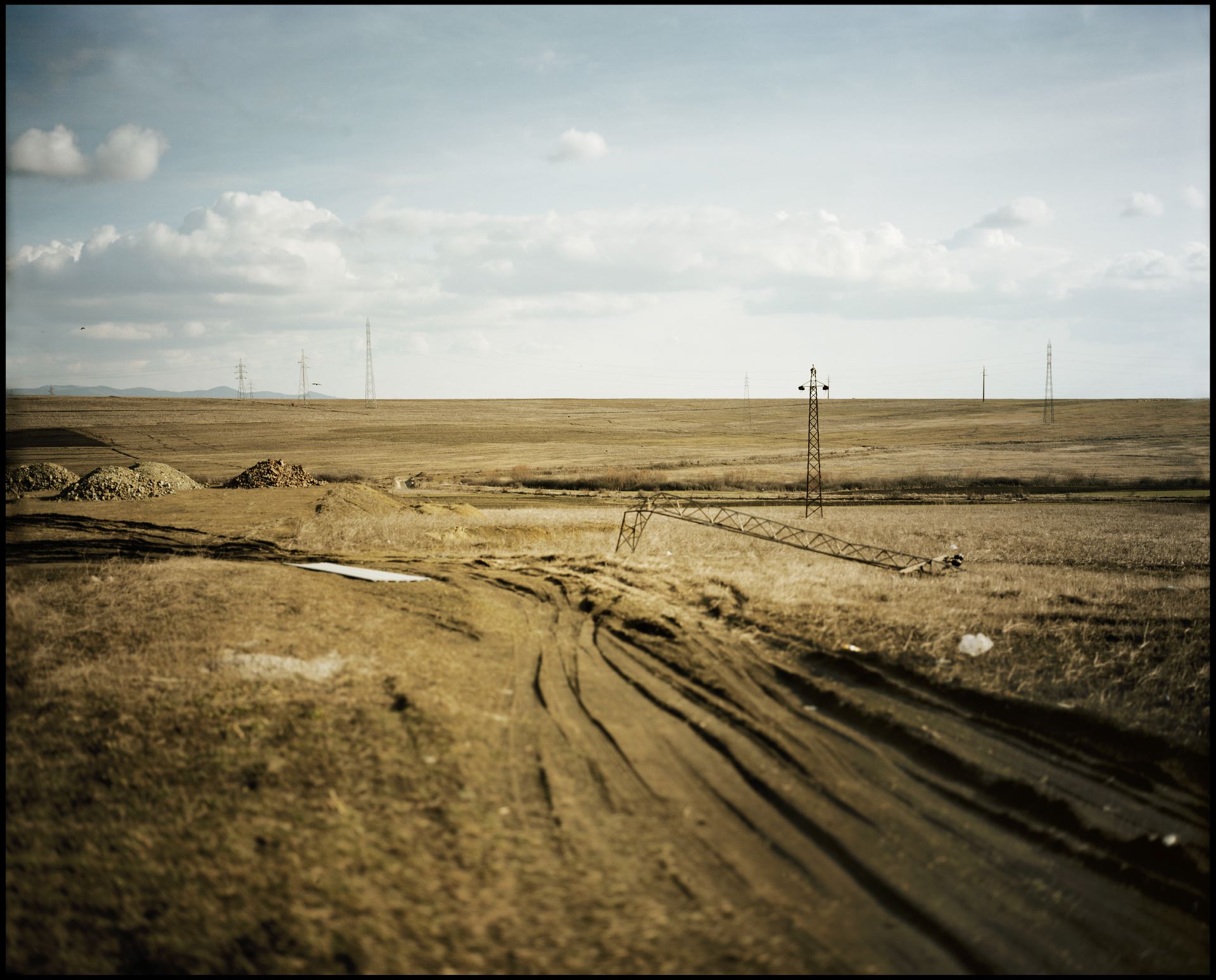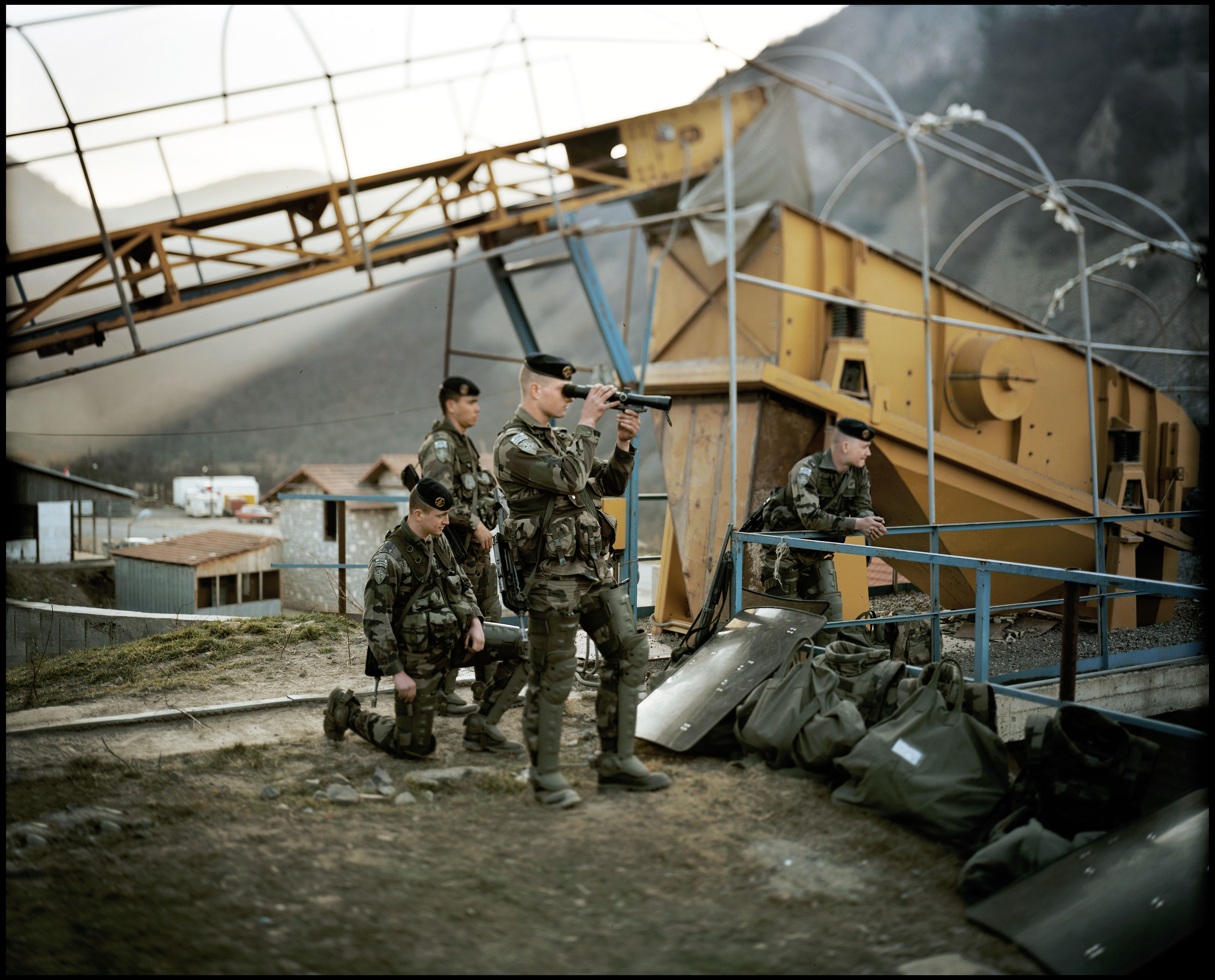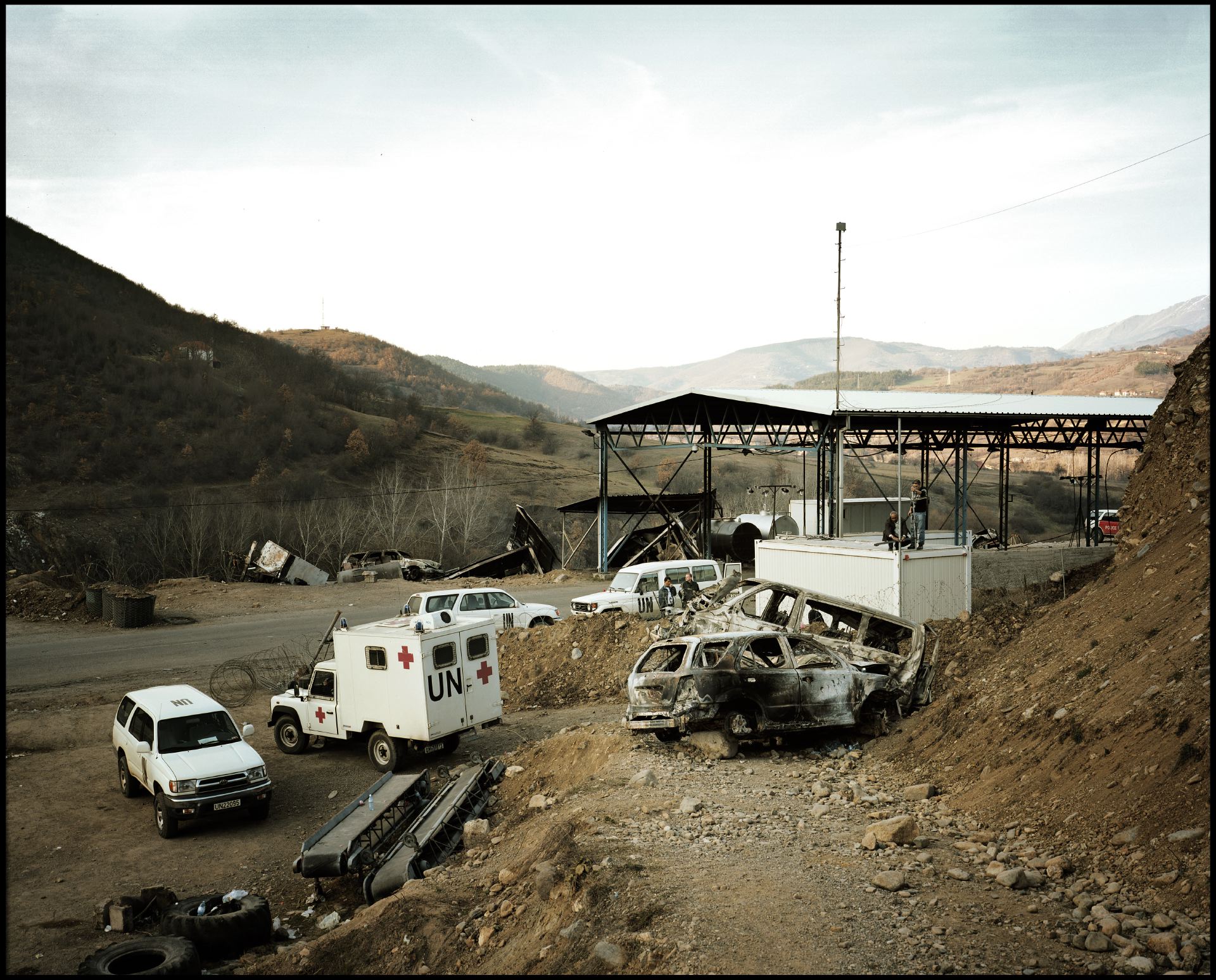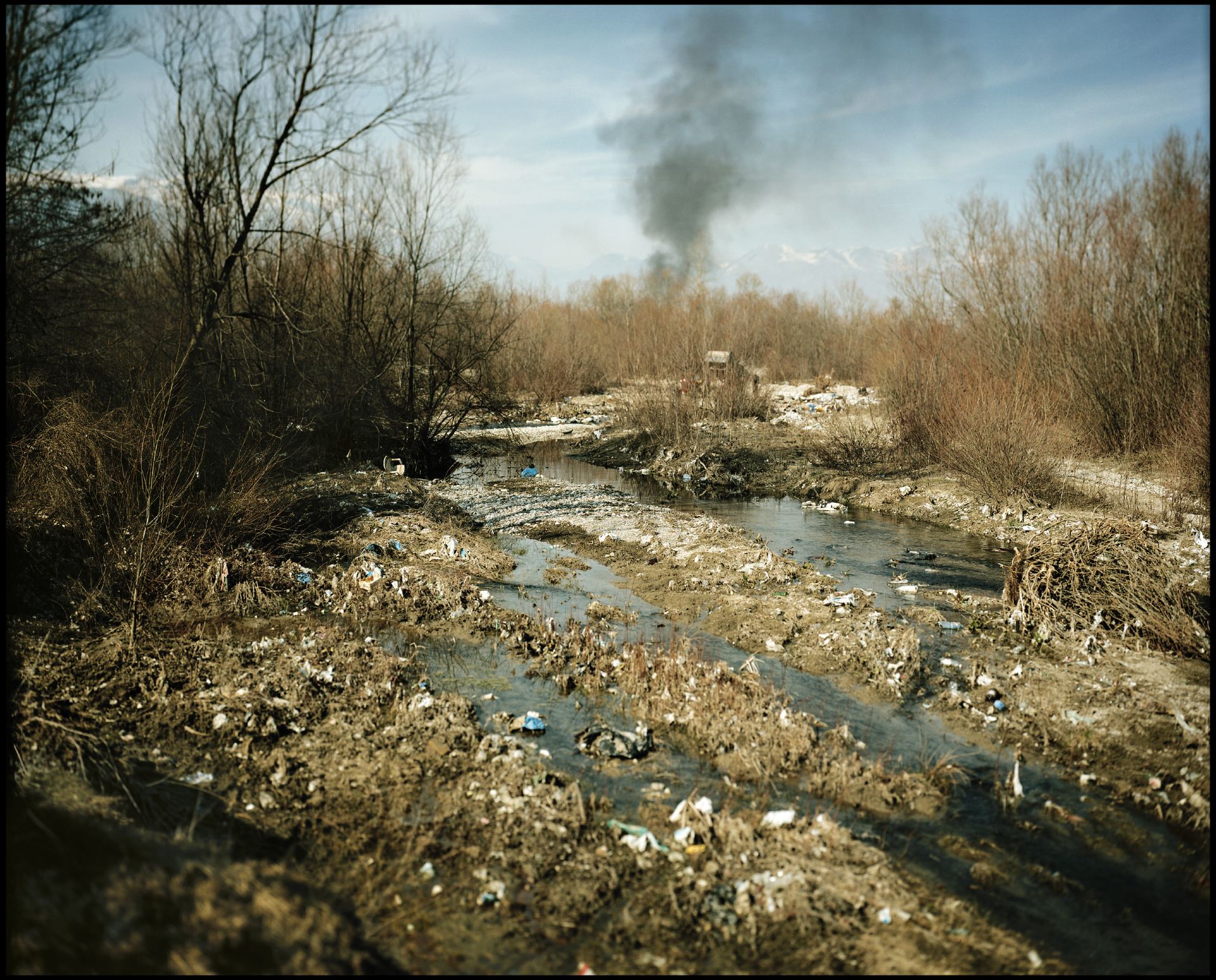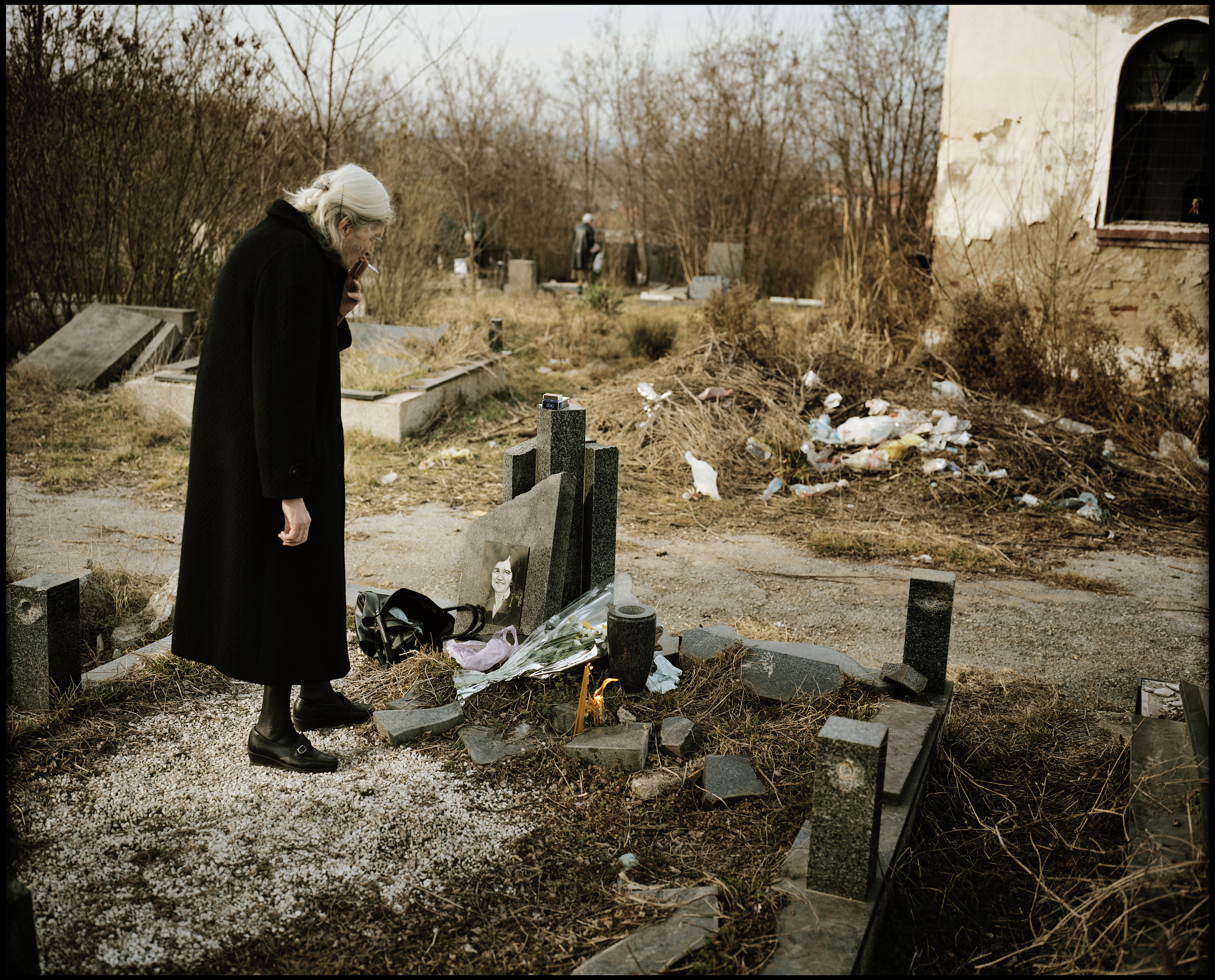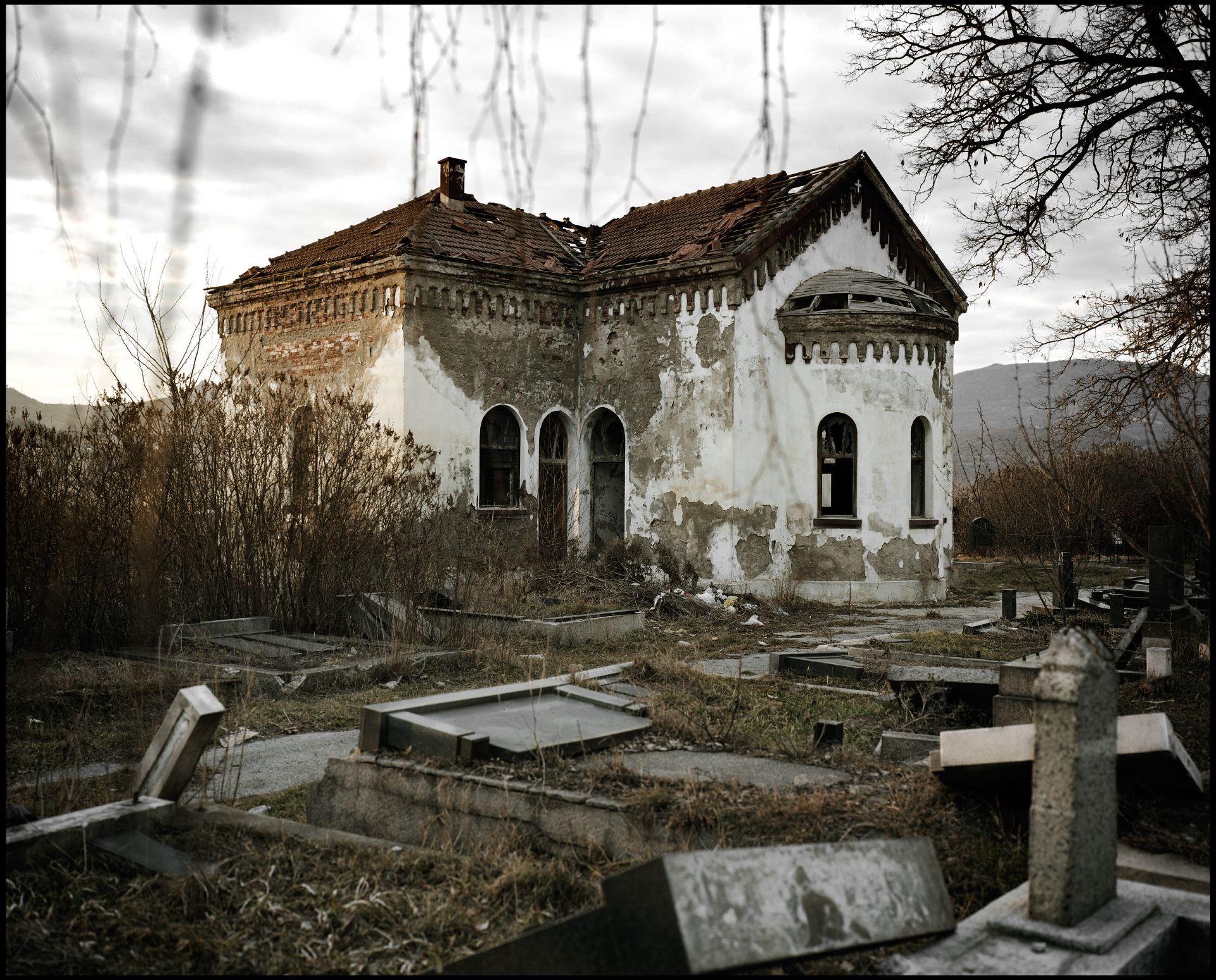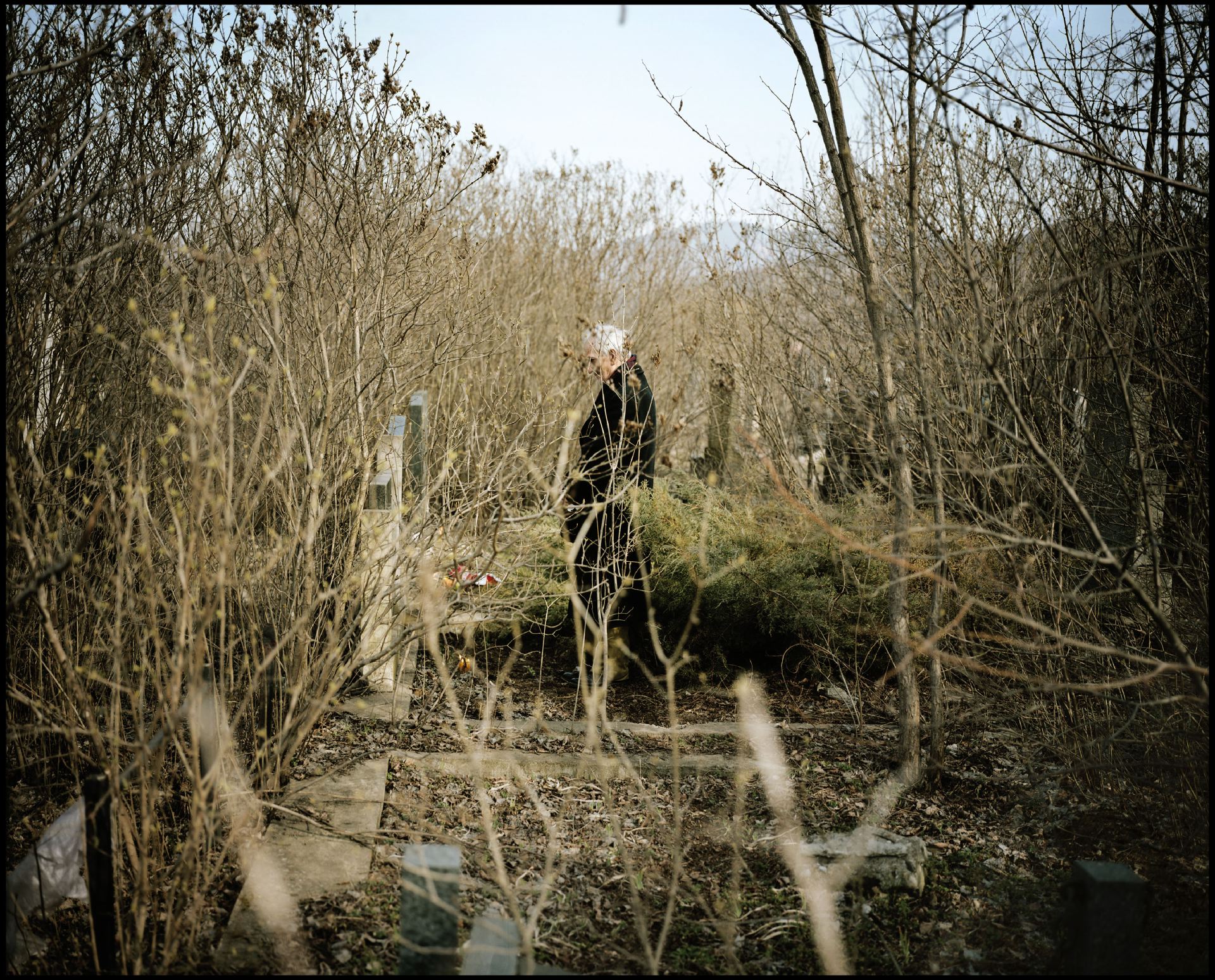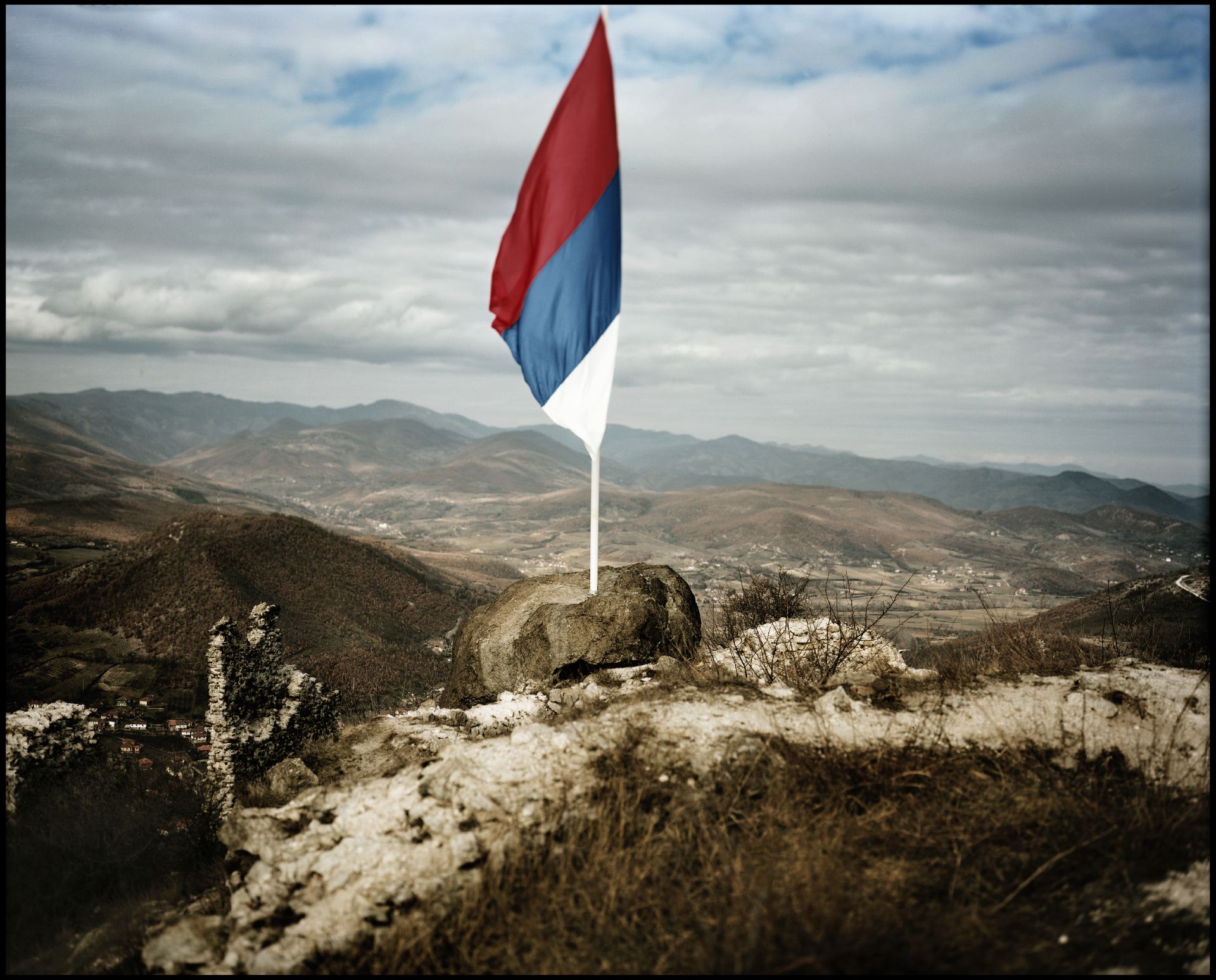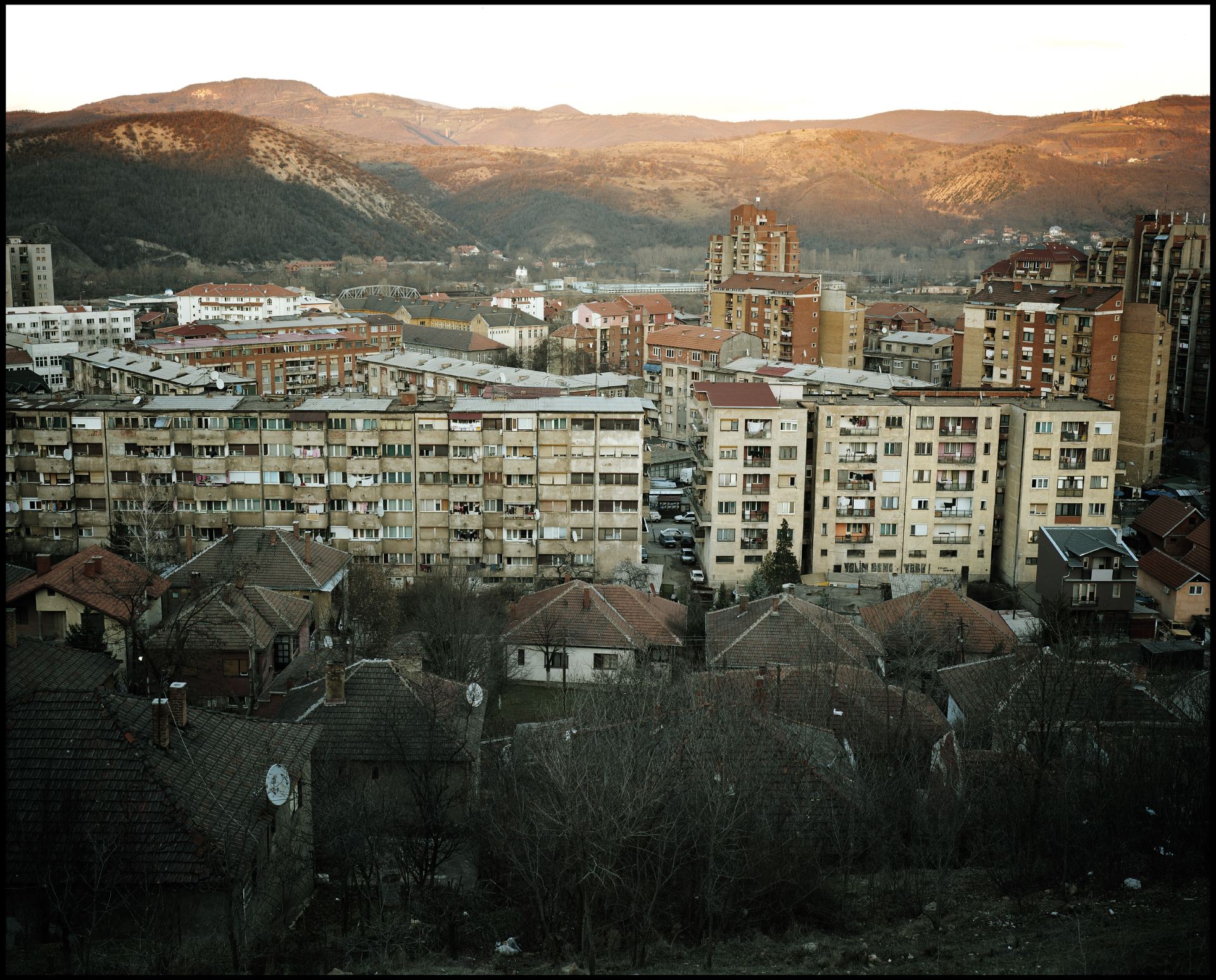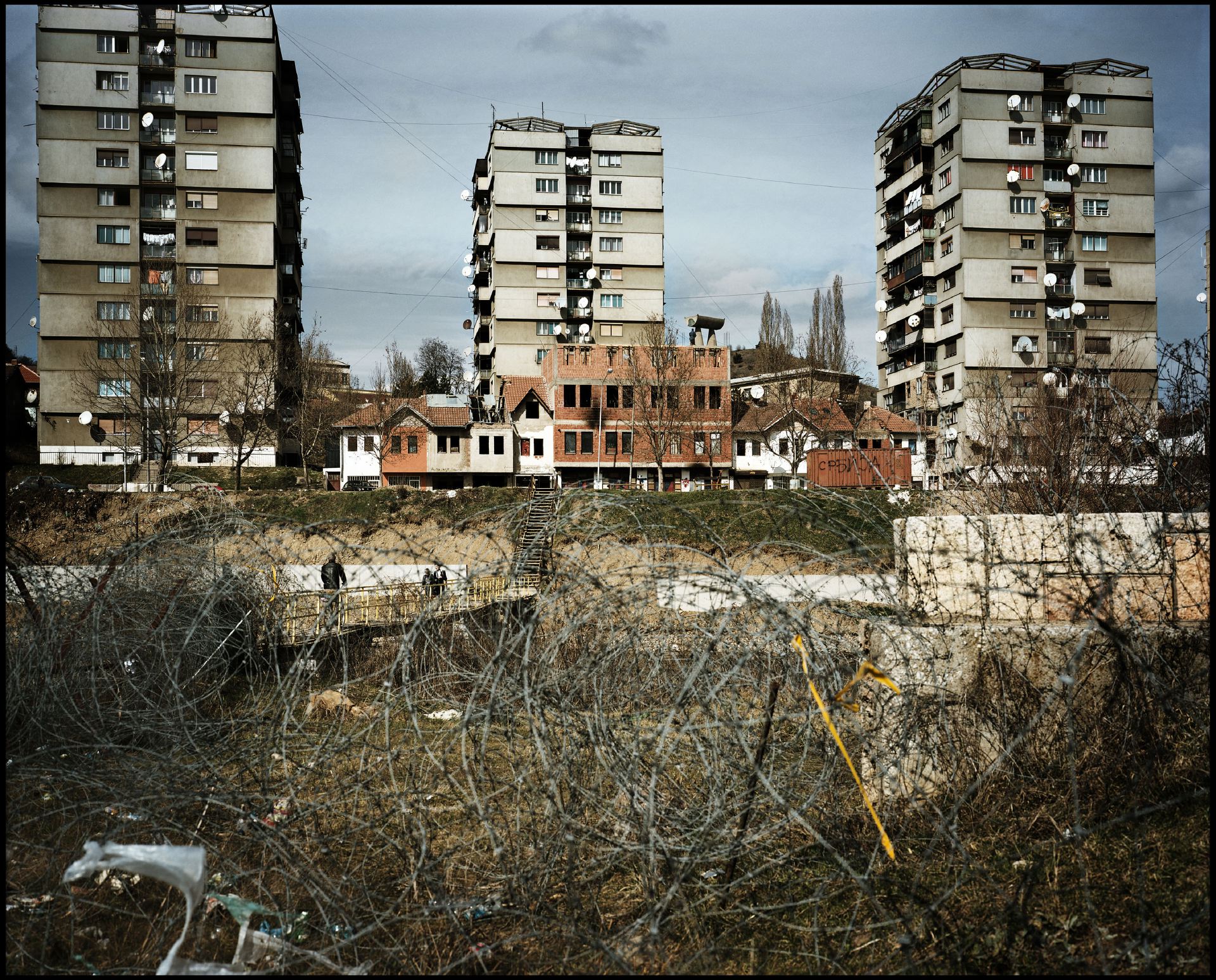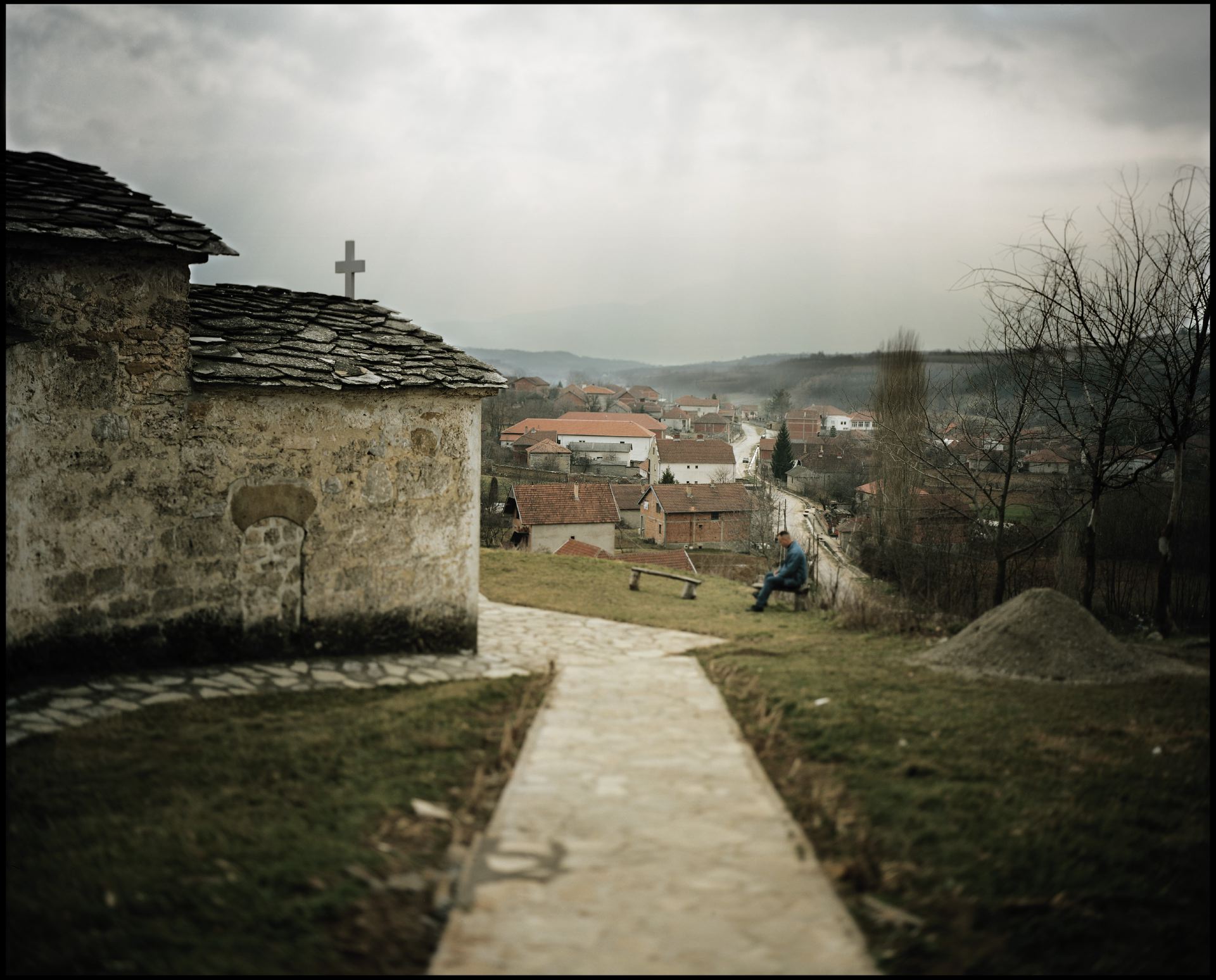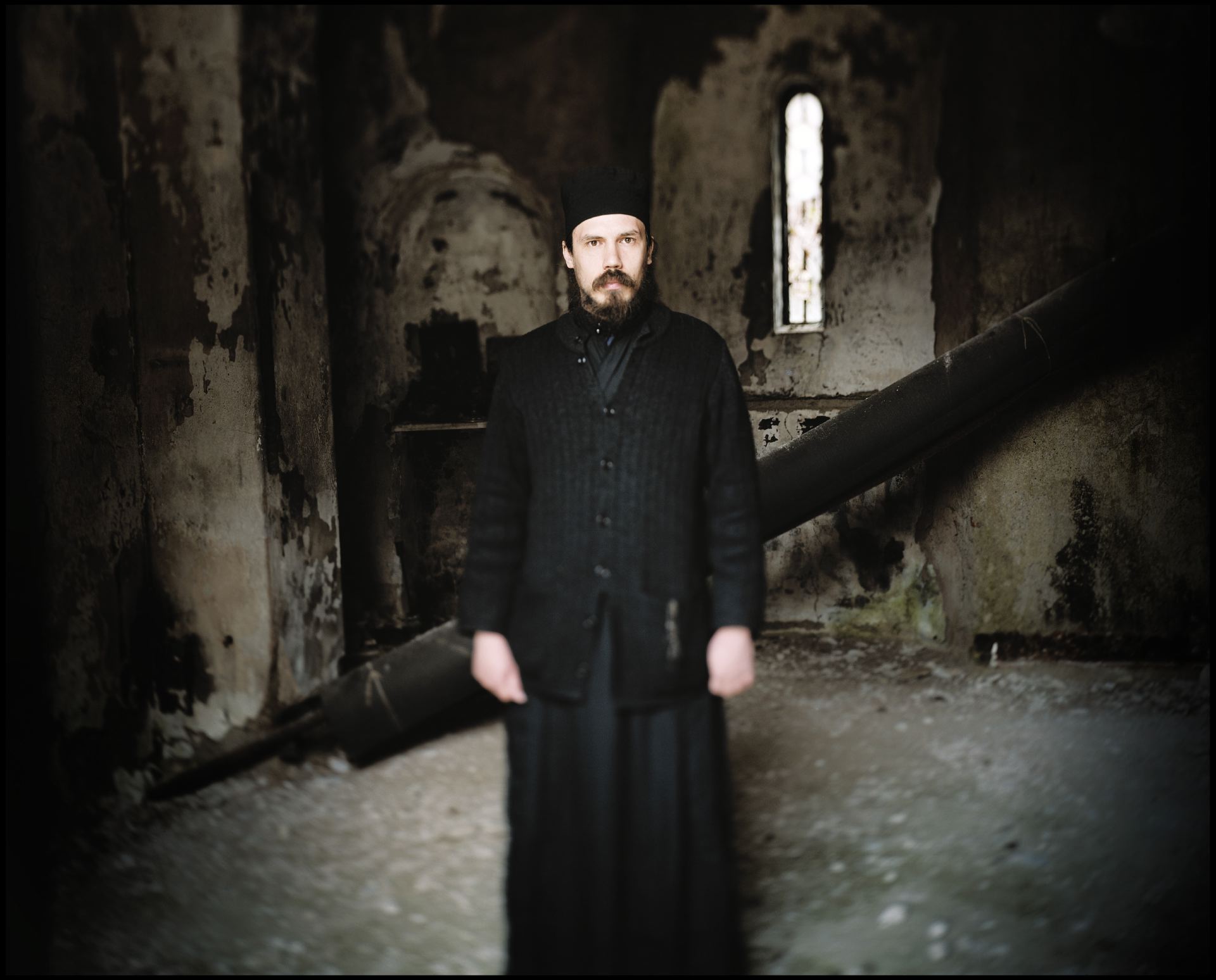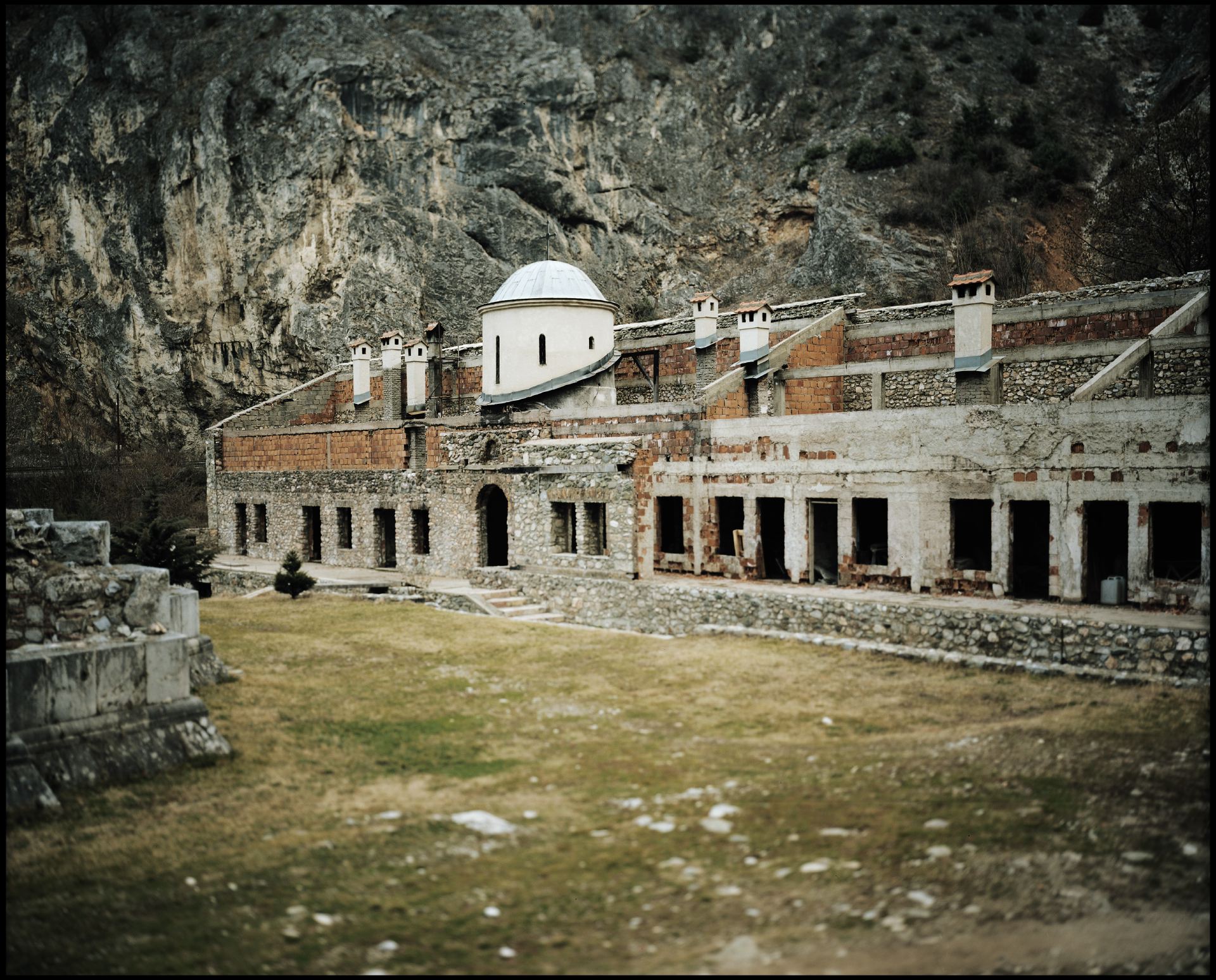The Serbian Memory of Kosovo, 2008
Under UN protection since June 1999, the Albanians of Kosovo have declared their independence on February 17, 2008.
“Since 1999 more than 200,000 Serbs have fled Kosovo and 22,000 have had to abandon their flats or houses in order to find refuge in nearby landlocked villages. And while Albanian villages are draped in flags and banners, resembling the aftermath of a national holiday, the Serbian ghettos sink in misery and despair. (…) Some Serbs dream of leaving, but in the Gorazdevac enclave as elsewhere, many more want to stay at all costs. Because of their dead, because of their land; this cradle which beckons them like an eternal grave”.
Texte by Aline Maume, Geo magazine
It’s on this site that, six centuries later, on June 28th 1989, Slobodan Milosevic gave a speech rehabilitating Serbian nationalism, in front of nearly a million people, signing the death of Yugoslavia.
French soldiers from the 35th KFOR IR watch over “Gate 1”, one of the crossing points between Serbia and Kosovo, burnt down by Serbs on February 2008. For the Albanians, it is now the border. For the Serbs, it is only an administrative border.
In the summer of 2003, Ivan Jovovic, 19, and Panto Dakic, 12, were killed while swimming in the Bistrica River, which separates the Serbian village of Gorazdevac from the surrounding fields.
Today, nobody dares to venture there anymore. The Bistrica has since become a garbage dump.
The killer or killers have never been identified.
In Mitrovica, the big divided city in the north, this Serbian cemetery is regularly desecrated. Since the war, the relatives of the deceased only go there under military escort, as it is located in the Albanian part of the city.
The Serbian flag flies over the ruins of the Zvecan fortress in the north of Mitrovica. This castle, built around the 10th century, is one of the jewels of Kosovo’s heritage.
The north of Kosovo is the only region of the province where Serbs are in the majority. Some people are talking about the possibility of a partition of Kosovo and of the north becoming part of Serbia.
In March 2004, new violence spread throughout Kosovo. Serbian enclaves are attacked from all sides.
Very old churches and monasteries are destroyed by groups of Albanians. German KFOR soldiers did not resist the rioters who set fire to one of the jewels of Serbian heritage: the 14th century monastery of St. Archangels, three kilometres from the town of Prizren.
